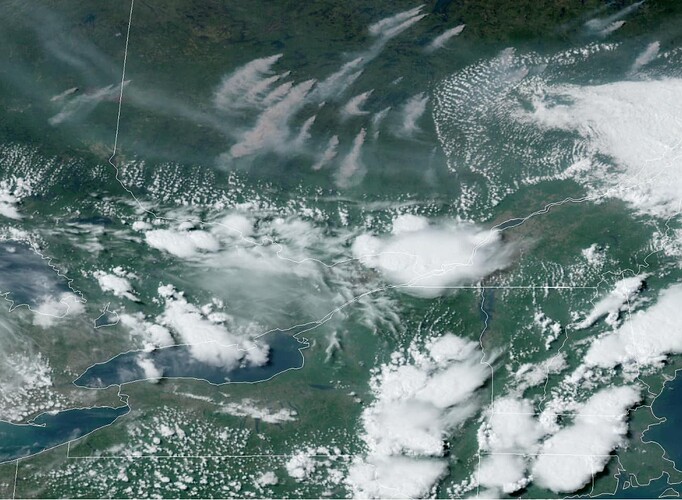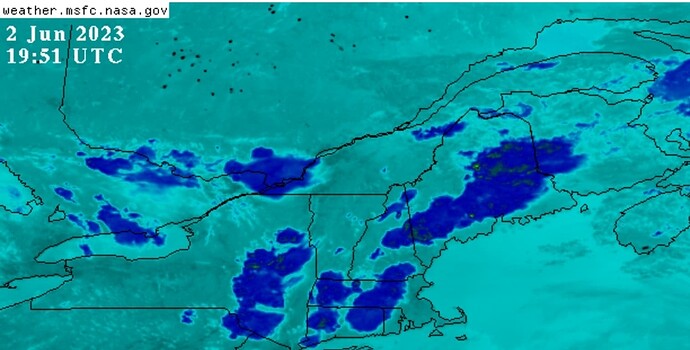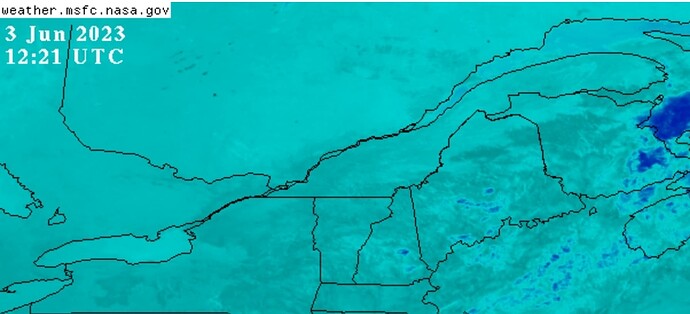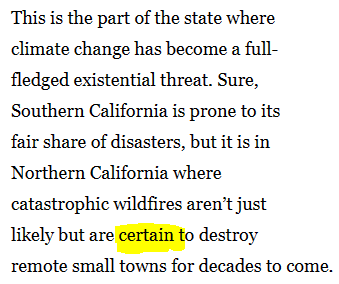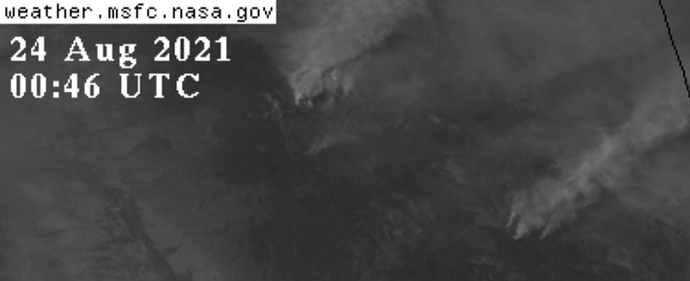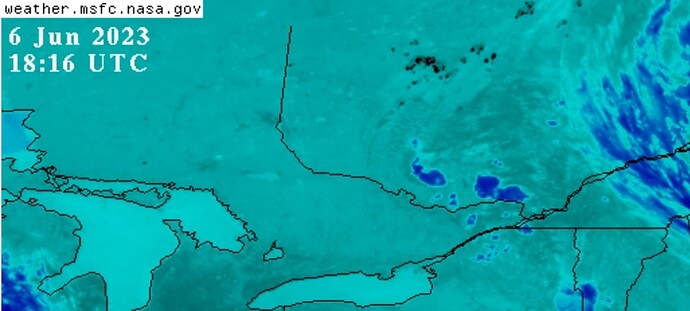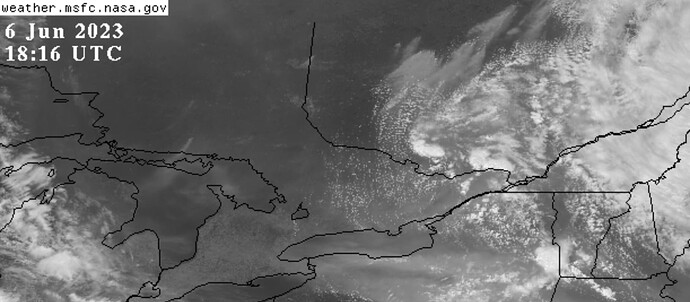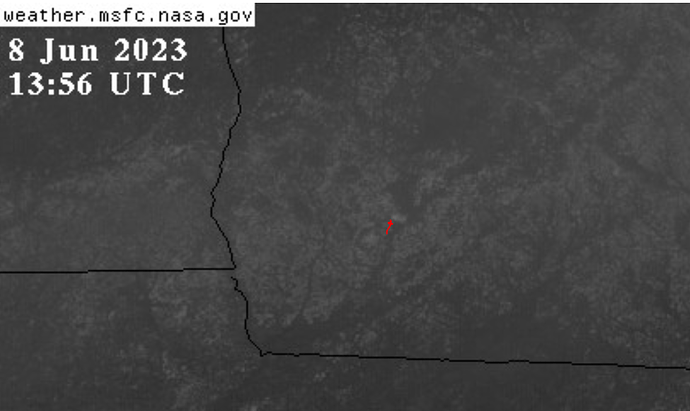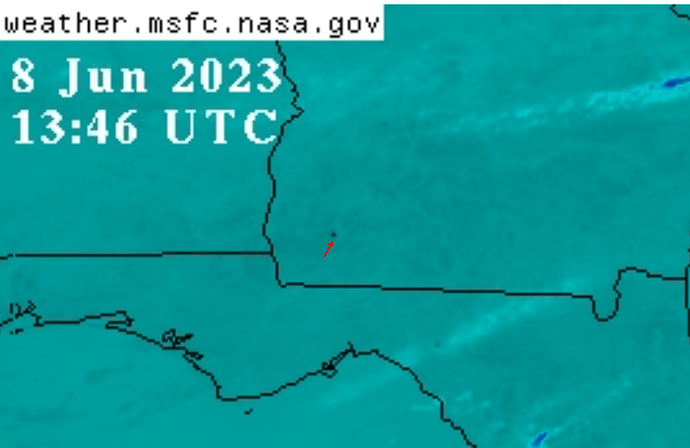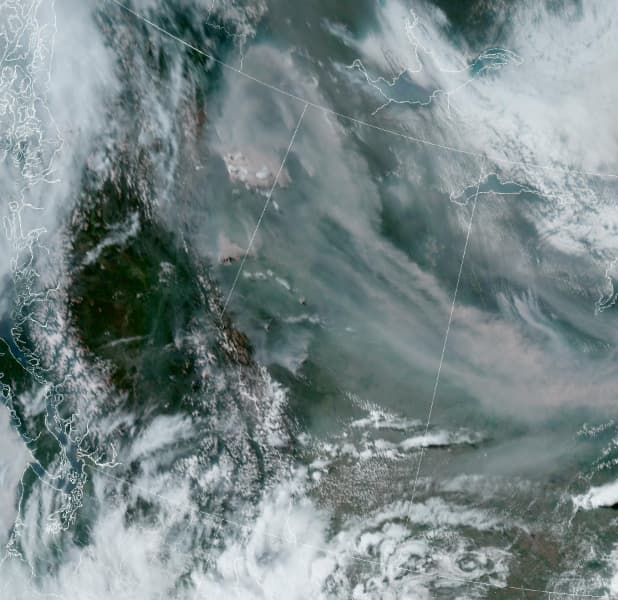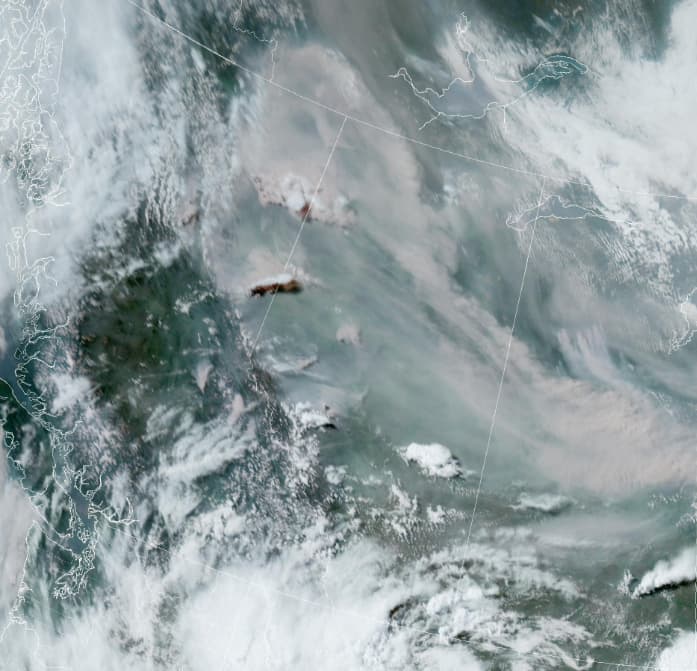Sorry, I felt this warranted a new post–now it is the Quebec wildfires.
Update June 3 08:47 EST:
As usual, the intensities of all fires abates at sunset as reflected in both the infrared signature and comparatively small smoke plumes. “It’e the wind, Sharick! Why do you keep harping (no pun intended) on this?”
I dunno, maybe because the wildfires are getting worse? And the patterns are the same? And the world doesn’t see the technology being deployed against them?
The fires yesterday in Quebec were by far the worst single-day events I have observed to date. In the course of hours, many existing small fires, as well as new ones, erupted into frothing infernos, not so much randomly (as their great distances apart would suggest), but like synchronized swimmers wearing smoking streamers on their arms and legs.
I don’t dismiss the effects of wind on forest fires; they will fan the flames and launch more embers aloft. But having 30-plus volcanic fires more in unison than not, but nearly always in the presence of daytime solar radiation and attending aerosol-based clouds, well, that screams that something more than wind is intensifying these fires. Something unnatural. And if it is unnatural, then it is man-made. And if it is man-made, then it has a purpose.
It is now 09:38 and of course, aerosol clouds with their energy waves present have appeared. The wind is picking up and will and likely change direction, making it harder to fight the fires.
Surprisingly, there doesn’t seem to be much interest here on Giza about this. I’ve posted about unnatural fires in Mississippi River valley, New Mexico and California with similar response. Perhaps readers (for those who actually read my rants) conclude the black dots are a natural consequence of a naturally burning hot wildfire and Sharick is simply off-base.
Isn’t anyone troubled enough by this onslaught in Canada? This could be Kentucky, the Carolinas or Colorado even today.
Here are Visible and Infrared Image Viewers from NASA that provide latest 4:10 hrs of imagery from the NOAA satellite.

